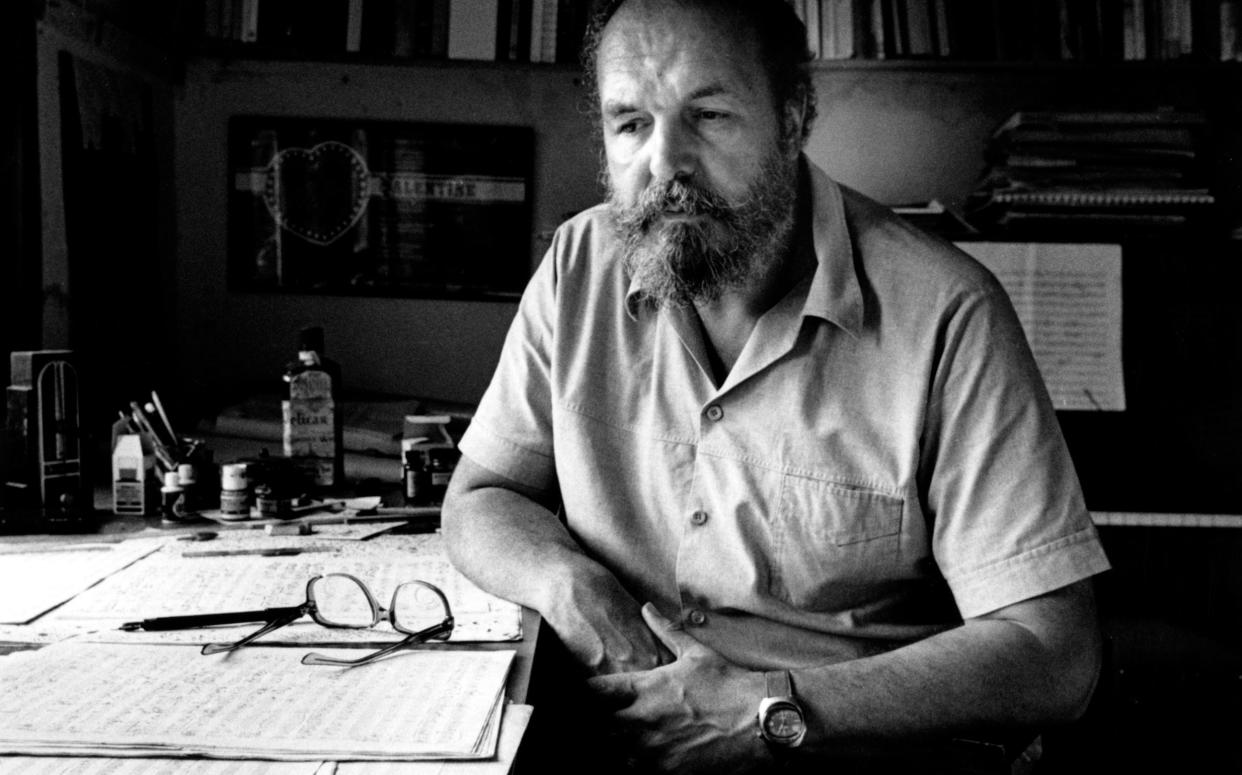George Newson, avant-garde composer who worked with Delia Derbyshire and danced with John Cage – obituary

George Newson, who has died aged 91, was once a leading light in the avant-garde; he composed an early piece of British electronic music, saw his oratorio Arena (1971) conducted at the Proms by Pierre Boulez and danced with John Cage to the Beatles’ Sgt Pepper’s Lonely Hearts Club Band.
A hirsute figure with a large frame, Newson wrote Silent Spring (1968) using electronic sampling techniques to superimpose natural bird song recorded at London Zoo and human declamation against a montage of manipulated sounds.
Three years later came Arena, which was based on the East End music-hall theatre of his childhood and formed part of the first Prom held at the Roundhouse in north London. Noisy and irreverent, it featured the King’s Singers in a Black Magnificat, Jane Manning singing a lament inspired by Igor Stravinsky’s death and Cleo Laine telling the Garden of Eden story from Eve’s perspective.
The actor Joe Melia’s narration included such lines as: “Monsieur Boulez is at the stand, maestro furioso of orchestral karate – ready to defy with only one hand this lurking crew of stringers, bowmen, harpies, ear blasters, heavy breathers, pipers, snare smackers and tuners of the skin.”
On another occasion the BBC commissioned a work for an Invitation Concert given by the London Wind Quintet, but the exercise backfired because the players considered Newson’s improvisation passages beneath them. More successful was Praise to the Air (1972), a setting of a George Macbeth poem for the corporation’s 50th anniversary, and O My America (1985) in which text from Nabokov’s Lolita describing long road trips is juxtaposed with settings of utopian dreams from Plato, Shakespeare and Auden.
In 1970 the London Symphony Orchestra commissioned a piece on condition that it was for “normal” orchestral forces. Attempting to do something different within these limits, Newson laid out Twenty-seven Days for an orchestra distributed down the two sides of a concert hall, but the Festival Hall’s fire regulations confined the players to the platform cheek-by-jowl as they performed his chaotically crowded and arrhythmical textures.
George John Newson was born in east London on July 27 1932, one of four sons of George Newson, who was of Jamaican ancestry, and his Irish wife Edith, née Driscoll; an early memory was the funeral of a brother who succumbed to illness. During the war he was evacuated to Taunton, where he taught himself to play the piano.
At 14 he was heard playing boogie-woogie in a youth club and offered a scholarship to Blackheath Conservatoire. That led to evening classes at Morley College, where he wrote his Octet (1951) for wind ensemble, which The Daily Telegraph later said “suggests a thoughtful musical mind”.
He studied composition at the Royal Academy of Music with Howard Ferguson and Alan Bush, though was first ordered to take elocution lessons. Bush, a Communist, felt that a working-class student ought to be a working-class composer but accused Newson of betraying his roots after learning of his adventures in the European avant-garde.
While teaching music Newson began investigating electronic sounds with Delia Derbyshire in the BBC Radiophonic Workshop, resulting in The Man Who Collected Sounds, a musical-drama broadcast in 1966. The following year a Churchill Fellowship took him to the US, where he witnessed Robert Moog’s synthesiser in its earliest production phase. At a recent talk in Folkestone he recalled dancing at a party with Cage who, despite received opinion to the contrary, was “the sanest man I had ever met – with a great sense of humour to boot”.
An invitation followed to the RAI studios in Milan, where he developed a close relationship with Luciano Berio. Talking to the British Music Collection, he recalled hosting the composer in the Sussex countryside and hunting for a farm to satisfy the Italian’s thirst for fresh milk.
After the high-profile premiere of Arena Newson largely dropped from sight. He was a research fellow at the University of Glasgow and composer-in-residence at Queen’s University Belfast. Later works include Mrs Fraser’s Frenzy (1994), a charming one-act opera based on a Fleur Adcock poem, and the concerto Both Arms (2002) for the percussionist Evelyn Glennie.
He was an enthusiastic ornithologist and a prolific photographer, especially of composers, and many of his works are in the National Portrait Gallery in London. He created instruments out of almost anything, including old wooden butter churns tied together to make a percussion instrument, and made “sculptures” from dried banana skins.
In later years he entertained his grandchildren at the piano, modulating effortlessly from nursery rhymes into a Mozart sonata and then something spikier. At the local cricket club he planted trees to mark musical anniversaries, such as Beethoven’s birth.
Newson was 19 when he married June Gould, who worked in an art gallery in Rye, East Sussex. She died in 2019 and he is survived by their five children.
George Newson, born July 27 1932, died March 8 2024


